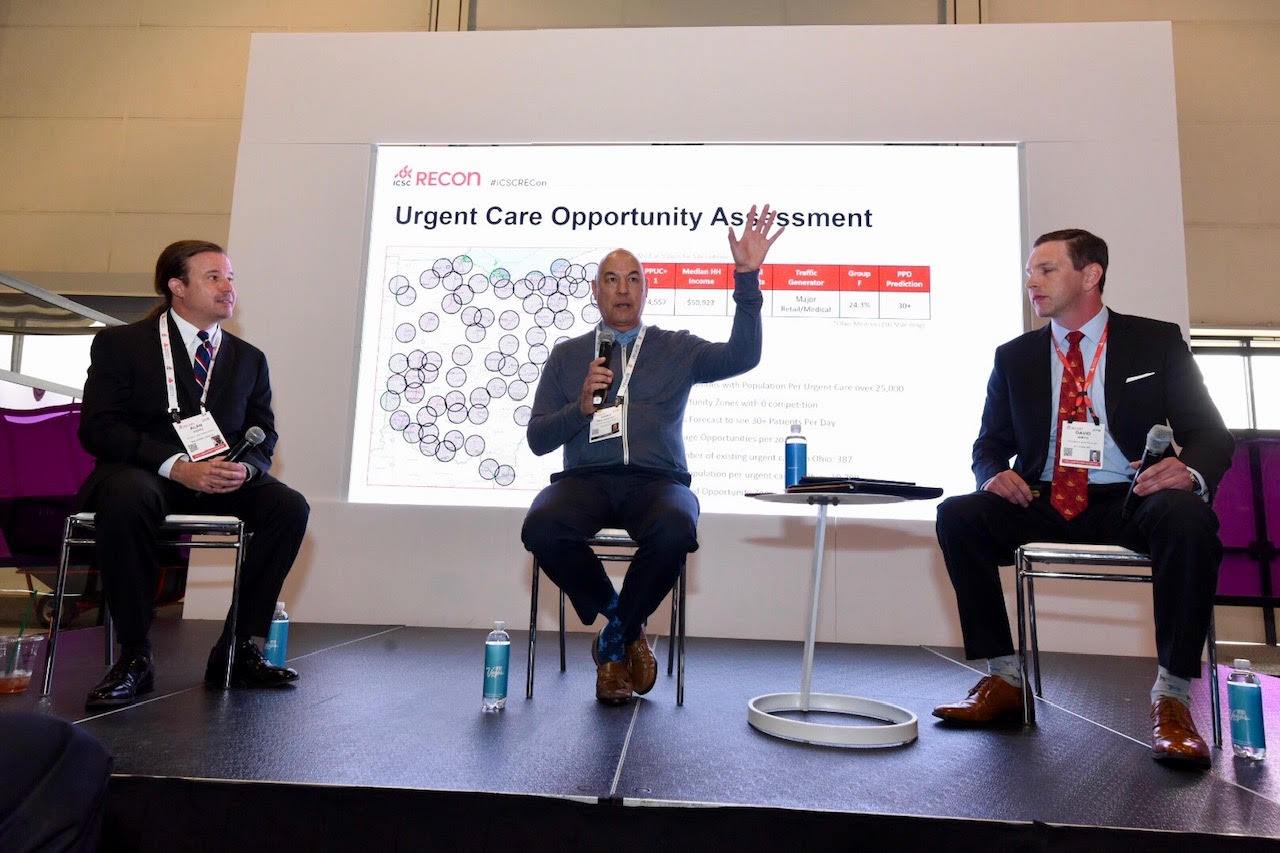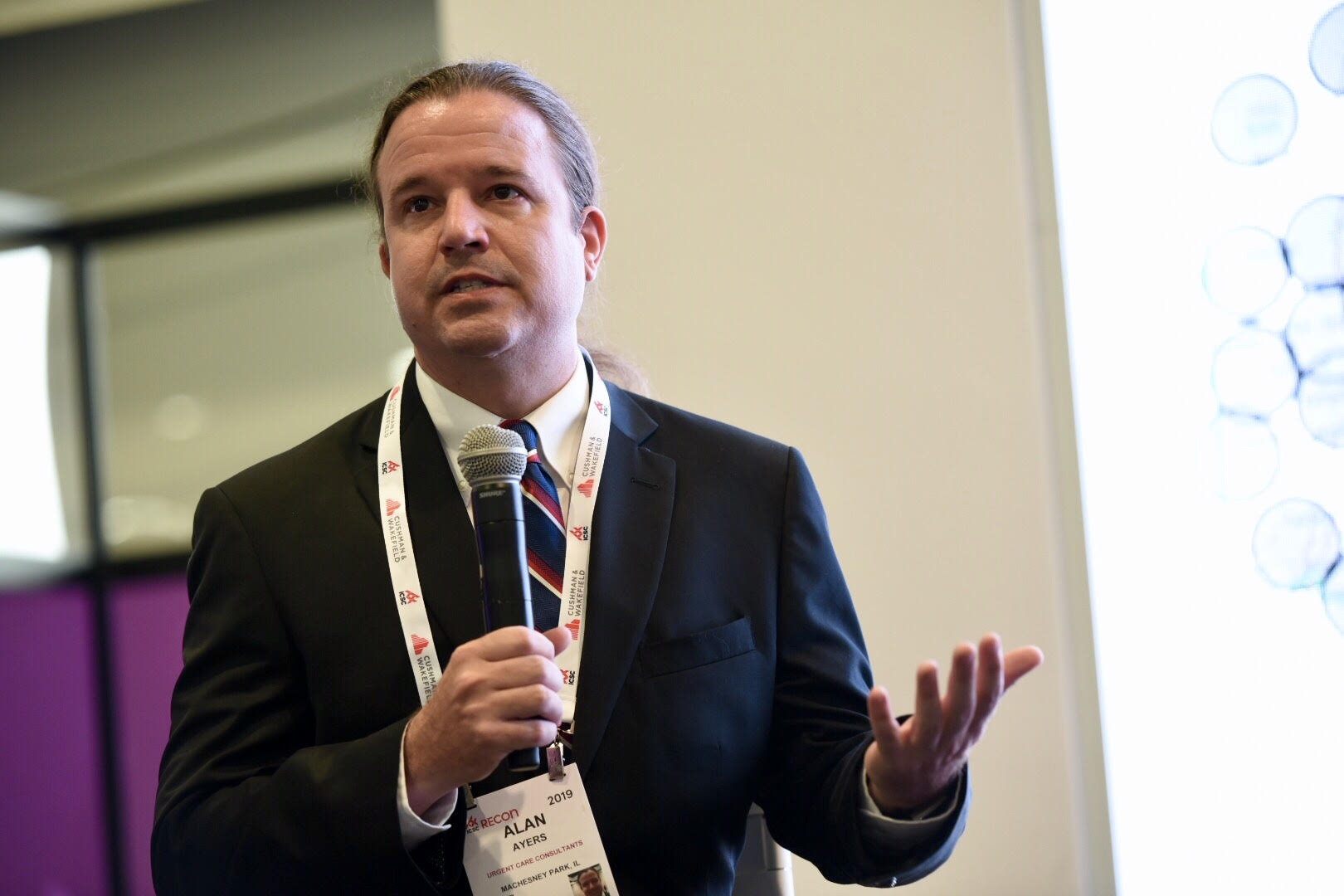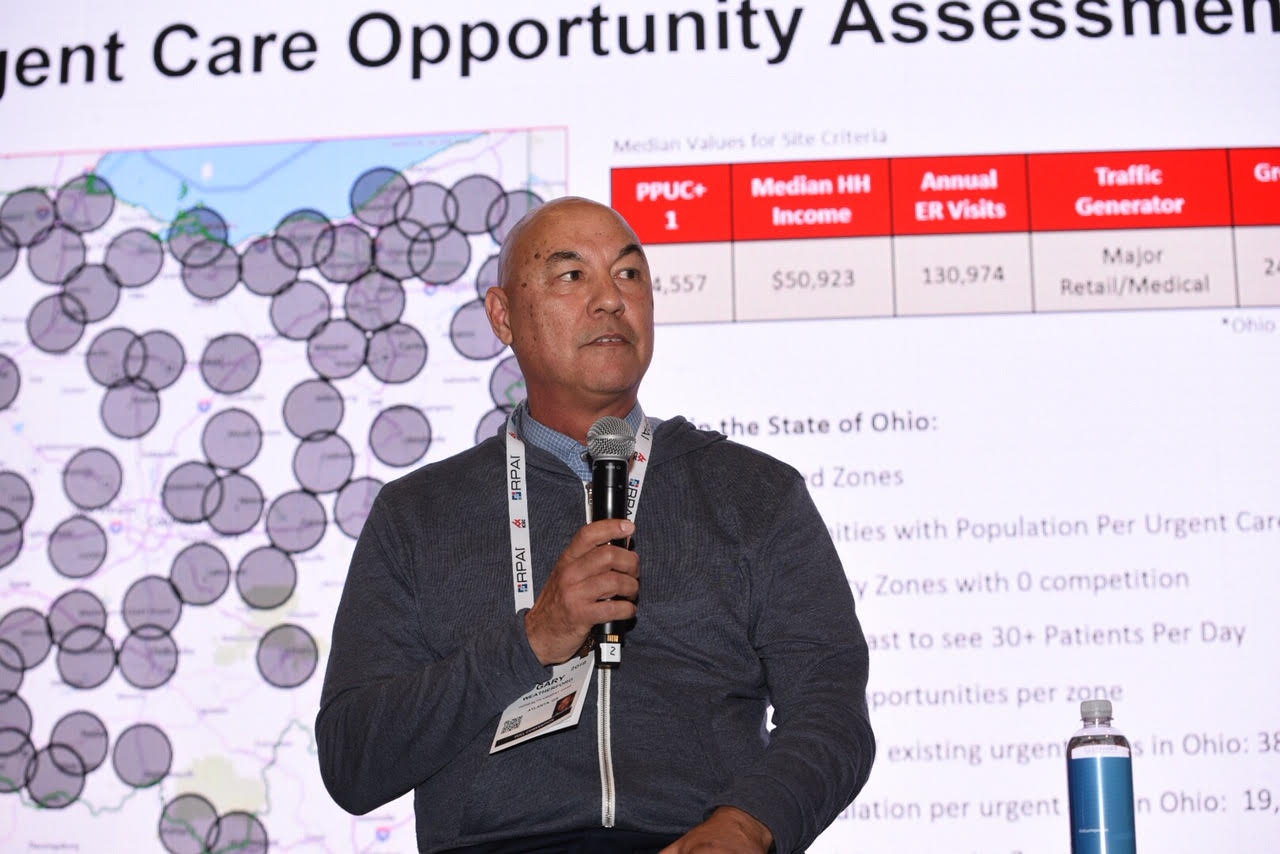Urgent-care clinics are cropping up in urban, rural and secondary areas, as Americans seem intent on avoiding hospital emergency rooms and other expensive alternatives. This is good news for retail landlords, who are accommodating urgent-care and other medical users in prime spots, said panelists at Monday's The Doctor is In session at RECon’s Health & Wellness Center.

Alan Ayers, of Urgent Care Consultants; Gary Weatherford, of GoHealth Urgent Care; and David Wirth, of Cushman & Wakefield
"Urgent-care centers are becoming ubiquitous," said Alan Ayers, director of Rockford, Ill.–based Urgent Care Consultants, who works with Velocity Urgent Care on site selection. The proliferation of urgent-care centers started as a suburban soccer-mom phenomenon primarily in large Sun Belt markets, but has now grown into virtually every market, notes Ayers.
There are some 8,000-9,000 urgent-care centers in the U.S., with each patient using them 1.7 times per year, on average. Urgent-care chains typically prefer freestanding buildings or end caps, though in-line space is not ruled out, Ayers said. Advances in artificial-intelligence medical record–keeping have enabled the industry to mold its site-selection strategy into an art form beyond the old mandatory "minimum 40,000 population" test. The higher-than-average number of residents per household in a market is only one of many exceptions to that rule, he said. "The most-important factors are good visibility and traffic counts," he said.

Alan Ayers, director of Rockford, Ill.–based Urgent Care Consultants
David Wirth, a director and broker in the Cushman & Wakefield St. Louis office, said the competition for good locations is fierce among urgent-care chains. "It's every bit like the competition among the top retailers for the best space," he said.
When Atlanta-based GoHealth Urgent Care enters a market, it completes its rollout in about 24 months, with the majority of centers opening within the first nine months, said Gary Weatherford, the company's chief customer officer. "Site selection is everything to us," Weatherford said. "And we want class-A retail space."

Gary Weatherford, chief customer officer, Atlanta-based GoHealth Urgent Care
Though the industry wants to attract more Millennials to centers, to build brand recognition, these consumers do not yet have a lot of medical needs, relative to other age groups, Weatherford observed. "We need a lot more than Millennials."
Patients are very sensitive about the time it takes to visit a center, Ayers said. This is why Velocity Urgent Care's benchmark visitation time is 45 minutes, or shorter, per visit, he said.
Urgent-care centers usually measure from 1,800 square feet to 3,000 square feet, and they have four or five exam rooms, though some centers are as large as 6,000 square feet, the panelists said. Urgent-care center build-out costs range from $100 to $200 per square foot, they said.
Many suburban markets have reached a density-saturation point, Ayers said. In response, insurance-payer networks have threatened to cover the services of new, redundant centers at the lower primary-care rate if more get built in a certain radius.
Despite industry growth, there is still room for as many as 1,500 additional urgent-care centers in the U.S., Ayers says. Centers handling more than 50 to 70 patients per day tell urgent-care real estate decision makers that a center needs either to add another primary-care physician to a site or else open a new location, he said.
Research indicates that the number of people visiting the emergency room decreased over the past decade by 36 percent, while visits to urgent-care centers increased by 140 percent. "We are changing the face of health care," said Ayers.
By Steve McLinden
Contributor, Commerce + Communities Today


